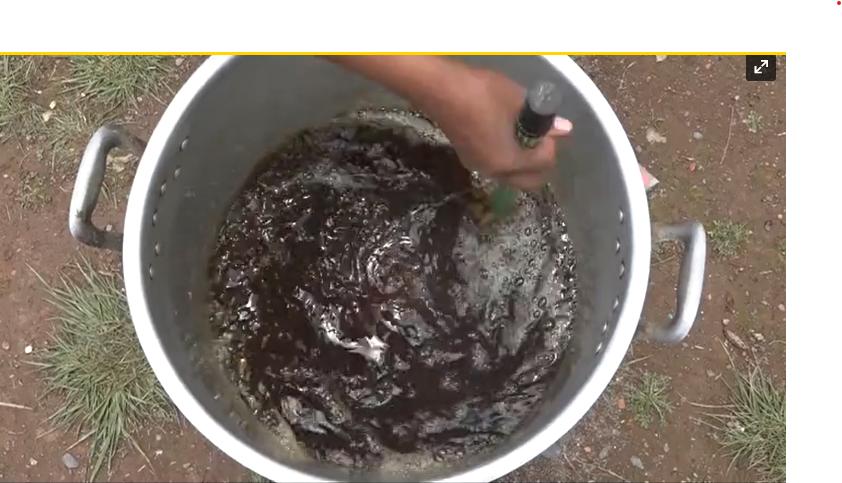Bio-fertilizers contain good microorganisms that are good for the soil and crops. The microorganisms break down organic matter hence improving the fertility of the soil. Bio-fertilizers strengthen the plants, so they can resist pests, diseases, and damage from weather. To make the fertilizer, you need a 250-liter plastic barrel with a metal ring to close the barrel tightly. The barrel must have a valve to release the gases that are formed during fermentation.
Fertilizer making process
Collect 30kg of fresh dung. Cow dung has good bacteria and fungi that help in the decomposition of organic waste. Add the cow dung to the barrel, add in a few buckets of water, and stir with a wooden stick.
Dissolve 5kg of brown sugar in hot water, and let it cool off a little. Dissolve 2 packets of 175g of yeast in comfortably warm water, add a cup of the sugary water to activate the yeast, and then add
the sugary solution together with the yeast to the barrel and continue
stirring the mixture.
the sugary solution together with the yeast to the barrel and continue
stirring the mixture.
Fill up the barrel halfway with water and add chopped alfalfa or any other nitrogenous legumes.
Add 5 kgs of pure wood ash from the kitchen, this is rich in calcium and phosphorus.
Enrich the fertilizer by adding 5 kgs of guinea pig droppings, rabbit droppings, or fresh chicken droppings.
Add 2 liters of yogurt or 10 liters of fresh milk because these contain bacteria that use the nutrients to produce lactic acid which helps reduce diseases and nematodes in the soil and promotes plant growth.
Add 2 kg of egg shells and fill up the barrel to 15cm from the rim.
Cover the barrel with a lid that has a hole and which hole is attached to a pipe that allows air formed during fermentation to leave the mixture. The other end of the pipe is put into a plastic bottle filled with water.
The biofertilizer will be ready in 2 to 3 months depending on the environmental temperature and materials used.
Using the bio-fertilizer.
Before the fertilizer is used, it is important to filter the biofertilizer and remove materials that could clog the knapsack.
For most crops, put 2 liters of the biofertilizer in a 20-liter knapsack and fill the rest with water.
You can apply multiple times to crops and it is important that you spray either early morning or late evening.
It is important that you spray during the vegetative growth stage of the plant until flowering and not advisable to use the bio-fertilizer after flowering.



















